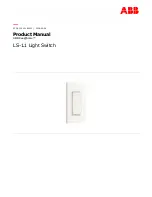
CHAPTER 10: Emulation Capabilities
91
Special Control Keys
•
Delete
deletes the character over the cursor and moves all remaining characters in the field one
position to the left.
•
Erase Input
clears all non-bypass fields you have modified.
•
Error Reset
clears your terminal of the following conditions: (l) insert mode, (2) error messages,
usually displayed on row 24, or (3) a system request state, as when SYS REQ is pressed.
•
Home
moves the cursor to the position defined by the host as home. Usually, this is the start of the
first field on the screen. If the cursor is already at this position, the key performs a Record Backspace
function, which requests a display of the previous record in a file or database.
•
Insert
sets the insert mode for the current field. Insert must be reset before you can exit the field.
Field Exit Keys
•
Duplicate
causes duplicate characters (displayed as asterisks on ASCII terminals) to be written from
the cursor position to the end of the field.
•
Field Exit and Field Plus
perform the same function; they erase all characters to the end of a field,
then move the cursor to the next non-bypass field. If invoked on a signed-numeric field, they also
write a null to the sign position of the field, creating a positive number, and when invoked in right-
adjust fields they align the data entered to the field to the right.
NOTE
Most of the Terminal Modules support only EXIT.
•
Field Minus
is only valid in signed-numeric and numeric-only fields. It generates a negative number
by writing a hyphen to the sign position in the case of a signed-numeric field; for a numeric-only
field, the last character of the field is changed from a digit to an alpha character (D-zoned) to signify
a negative number.
Aid Generating Keys
•
Clear
is application-specific, but is usually used to clear the screen.
•
Enter Rec/Adv
transmits the data entered on the screen to the host.
• Help.
When used while an error (0005, etc.) is displayed, this key requests information on the error
that occurred; otherwise, its actions depend on the application you are in.
•
Command Function Keys 1-24
are entirely application-specific, but usually CMD 7 cancels the current
application and CMD 3 displays the previous screen (except on a System/34).
•
prints the contents of your screen to the console’s default printer.
•
Roll Up/Down
is also application specific, but is usually used to roll the data up or down; that is, to
select the previous or next page of text.
Special Host Keys
•
System Request
allows you to sign onto a System/34 host only, or to toggle between Console and
Subconsole Modes for each of the System/3X hosts, providing the workstation is so configured.
Signal Key
•
Attention
is often used to terminate the currently running program.
















































